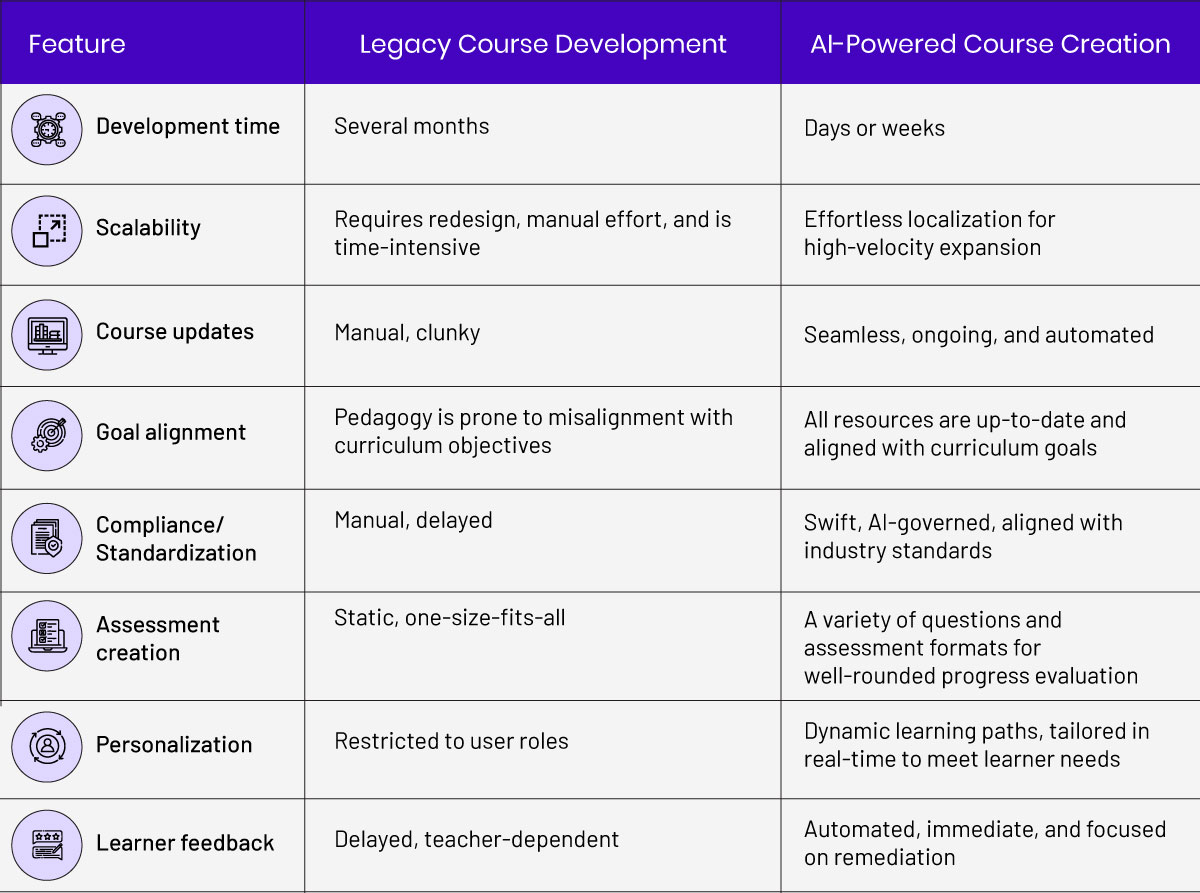
How Can AI-Powered Course Creation Tools Act as Co-Creators in Digital Learning?
Gen Alpha, mostly in the K-5 segment as of 2025, is born immersed in technology. This is a native artificial intelligence (AI) generation and is being raised by tech-savvy parents. You know the ones who use a multitude of apps to keep their kids occupied. They are apps to teach your kids a good daily routine, with points for everything from making your bed to finishing food. Catering to this generation of tech-dependent learners, with shrinking attention spans and growing demands for tailored, instant, and flexible experiences, is a pervasive challenge in K-12 digital publishing. Much like any other industry, AI has permeated nearly every aspect of education, including student learning, administration, support, and assessments. AI is transforming the traditional course creation processes to help K-12 publishers create more effective and personalized K-12 learning ecosystems. AI has revolutionized digital course creation for K-12 by streamlining publishing workflows, modularizing curricula, and seamlessly ensuring compliance. From curriculum planning and instructional design to aligning educational materials with learning goals and regulations, AI-powered course creation can do everything.
The Old vs. The New: Course Creation Reimagined
In addition to enriching student journeys, AI-powered course creation elevates K-12 digital publishing workflows. This offers several advantages over traditional content creation for digital learning. Take a look:


Using Automation in Combination with Creativity
AI-powered course and assessment authoring provides new means for K-12 publishers. Online course creation tools allow instructional designers to make various learning materials with less effort. Large language models (LLMs), when trained well, can make instructional materials that are aligned with grade-level standards. This frees up time for educators, who can then focus on creative input and oversight.
Well-known pedagogical principles, such as Bloom’s Taxonomy and Universal Design for Learning (UDL), may get undermined with high-speed digital learning content creation in the competitive publishing space. However, AI in education content creation offers more than speed-to-market. It ensures that pedagogical integrity is maintained by incorporating these principles in content and assessment generation. Research suggests that the instructional quality of educators who use AI is 41% higher than those who rely on traditional professional development. K-2 publishers can create curricula much faster with AI-powered online course creation tools. These also allow you to use multiple formats for both content and questions in assessments. These include interactive eBooks for K-12, visual lesson summaries, quick-review flashcards, and quizzes for in-lesson reinforcement.
AI Turns Static Learning Paths to Dynamic Learning Journeys
AI helps K-12 publishers deliver students-first education. It tracks learner preferences, individual needs, as well as progress. Insights from these are then used to change static learning into a dynamic journey. AI-powered course creation uses modular learning materials to adjusts learning paths in real time, responding to student needs based on learning analytics. MagicBox’s in-house AI learning assistant, KEA, helps students to effortlessly search supplementary content. It can also create summaries and offer reinforcement resources to improve learning acquisition. It motivates them and offers continued support in the absence of teachers. This truly makes anytime and anywhere learning possible.
You can find out more details on our blog: AI assists publishers in developing learning materials faster
Interoperability and Scalability
The best digital learning content creation tools do more than just curriculum development. They offer ways to streamline course creation and distribution. For instance, those with API-based architecture. These tools allow integrations with diverse globally operational LMSs and rostering tools.
AI-powered course creation, thus, enables K-12 publishers to localize content with little to no manual effort. K-12 publishers can cater to many learning styles, in multiple languages, and also comply with disparate US-wide educational standards. K-12 digital publishing that uses AI goes beyond creating learning materials. It becomes a foundation for learning ecosystems that are both scalable and flexible. Online course creation tools that have AI support the creation of formats that are compliant with accessibility, such as WCAG 2.1 and ePUB3. These reduce manual effort and improve accessibility.
Read more related blogs: AI-Powered Course Creation: Is the Future Here?
Challenges and the Road Ahead
With its unmatchable benefits, AI-powered course creation requires careful human oversight to ensure:
- Ethical and unbiased operations
- Student data privacy
- Transparent decision-making
- Editorial accuracy
- Culture consciousness
- Effective model training
- Ongoing monitoring
- Manual overridability
Not Just Faster—Smarter, Better, Stronger
Did you know that AI-powered learning tools can improve student engagement by 67%? You can build smarter, personalized, and more engaging learning experiences by leveraging AI in education. The best part is that these are aligned with learning goals and educational standards.
It is time publishers embrace AI as a co-creator. You must recognize that AI isn’t replacing K–12 publishers or instructional designers. It is a companion that can help you elevate your publishing workflows and amplify the impact of educational materials. By accelerating workflows, enabling adaptive learning, and ensuring scalable, inclusive delivery, AI turns into a team-mate we all need. Now is the time for educational publishers to take advantage of this evolution, considering it an opportunity and not a threat.
Try AI-powered workflows for free to experience what this technology powerhouse has in store for K-12 digital publishing.
Source link




